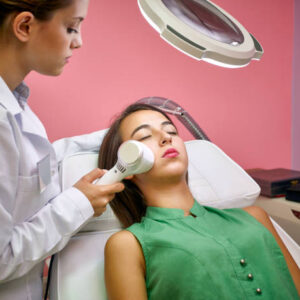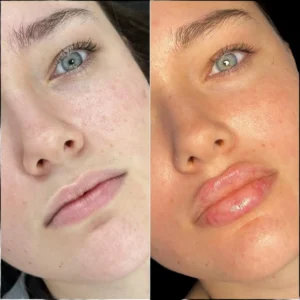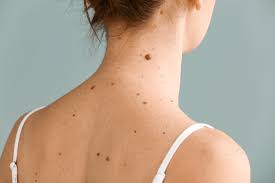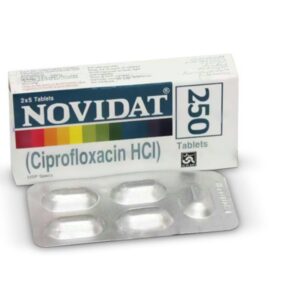For many men, changes in the body can be confusing, especially when those changes involve areas typically not associated with male anatomy. One such condition that often leads to embarrassment and concern is the development of breast tissue in men. Known medically as Male Breast Gynecomastia, this condition is surprisingly common and often misunderstood. While it can create emotional and physical discomfort, it’s important to understand that it’s a treatable issue with various solutions depending on its cause and severity.
What Causes Breast Tissue Growth in Men?
The primary driver behind this condition is a hormonal imbalance, particularly between estrogen and testosterone. Estrogen, commonly linked to female development, also exists in males, albeit in smaller quantities. Testosterone, the dominant male hormone, typically counterbalances estrogen’s effects. However, when testosterone levels fall or estrogen levels increase—whether due to natural aging, puberty, certain medications, or underlying health conditions—abnormal breast tissue growth may occur in males.
This imbalance can be triggered by several external and internal factors. Medications used to treat heart conditions, anxiety, depression, or ulcers may interfere with hormone levels. The use of anabolic steroids to enhance muscle mass can also lead to elevated estrogen levels once the steroids are metabolized. Additionally, substances like alcohol, heroin, and marijuana have been linked to hormonal disruption that may cause breast tissue to grow.
Health conditions such as hyperthyroidism, tumors of the testes or adrenal glands, liver cirrhosis, and kidney failure can also play a role. In some cases, gynecomastia occurs without an identifiable cause, which is known as idiopathic gynecomastia. Age is another significant factor—newborns, adolescents going through puberty, and older men may all experience temporary gynecomastia due to natural hormonal fluctuations.
Symptoms and Diagnosis
The most obvious and common symptom is the swelling or enlargement of one or both breasts. This enlargement can range from barely noticeable puffiness around the nipple to prominent breast growth resembling that of a female. Often, the tissue feels rubbery or firm rather than soft like fat deposits. Some individuals may notice sensitivity or pain in the area, while others feel a lump behind the nipple that may be tender to the touch.
Diagnosing this condition involves a thorough clinical evaluation. Doctors usually start by reviewing the patient’s medical history and current medications, followed by a physical examination. Hormonal blood tests are commonly ordered to check for imbalances in testosterone, estrogen, prolactin, and other relevant hormones. Imaging studies such as mammograms or ultrasounds may be recommended to differentiate between gynecomastia and conditions like breast cancer or pseudogynecomastia—a condition caused by fat buildup rather than glandular growth.
If imaging results are inconclusive, a biopsy might be performed to examine the breast tissue more closely, especially in older men where the likelihood of male breast cancer, although rare, is higher.
Emotional and Psychological Impact
Gynecomastia doesn’t just affect a man’s physical appearance—it also takes a toll on emotional health. Men and teenage boys with visible breast enlargement often report feelings of embarrassment, frustration, or shame. This discomfort may lead to low self-esteem, body image issues, and a reluctance to participate in activities like swimming, sports, or even intimate relationships.
In adolescents, the social pressure and bullying associated with body image can be especially intense. Being teased during formative years can result in long-lasting emotional damage, affecting academic performance, social development, and overall quality of life.
Psychological support is a critical yet often overlooked aspect of treatment. Counseling or participation in support groups can help individuals manage the emotional burden of the condition. These platforms also create opportunities for men to connect with others facing similar challenges, which can be therapeutic. Encouraging open conversations with healthcare providers, partners, or family members can also help dismantle the stigma and allow for earlier intervention.
Treatment Options
Not every case of gynecomastia requires treatment. In fact, many cases—especially those linked to puberty—resolve on their own over time as hormone levels stabilize. For mild cases that are not causing physical or emotional distress, a “watchful waiting” approach may be recommended, with periodic evaluations to monitor any changes.
When treatment is necessary, the first step is often identifying and addressing the underlying cause. If a specific medication is responsible, switching to an alternative may alleviate the symptoms. In cases linked to hormonal imbalances, medical therapy may include the use of anti-estrogen medications such as tamoxifen or raloxifene. While originally designed for breast cancer treatment, these medications have shown positive results in reducing breast tissue in men when used off-label.
Surgical intervention is considered when the breast enlargement is significant, long-standing, or resistant to medication. The two most common procedures are liposuction and mastectomy. Liposuction removes excess fatty tissue, whereas mastectomy targets glandular tissue. Sometimes both methods are combined for optimal results. Minimally invasive surgical techniques now allow for faster recovery and minimal scarring, making the procedures more appealing for those seeking a permanent solution.
Prevention and Lifestyle Considerations
While not every case of gynecomastia can be prevented, certain lifestyle adjustments may help lower the risk. Avoiding substances that interfere with hormone levels—such as anabolic steroids, excessive alcohol, and illicit drugs—is crucial. Managing stress, getting adequate sleep, and engaging in regular physical activity all support hormonal balance.
Maintaining a healthy weight is also key, as fat cells produce estrogen and contribute to hormonal imbalance. A diet rich in whole foods, lean proteins, and healthy fats, combined with regular cardiovascular and resistance training, supports both physical health and hormone regulation.
Regular health check-ups are important, especially for men over 40 or those on long-term medication. If hormone levels begin to shift due to age or illness, early detection allows for quicker treatment and better outcomes.
Final Thoughts
Living with gynecomastia can be challenging, both physically and emotionally. But it’s crucial to understand that the condition is far more common than many realize—and it’s treatable. Early diagnosis and informed decision-making can significantly improve both physical appearance and emotional well-being. Whether the cause is a hormonal fluctuation, a medication side effect, or an underlying health issue, solutions are available.
Men should not feel ashamed to seek help. In fact, awareness and proactive care are the first steps toward empowerment. By breaking the silence around this condition, we can reduce the stigma and encourage more men to take charge of their health.
Understanding your body is the key to living confidently in it. If you or someone you know is experiencing symptoms of gynecomastia, speaking with a healthcare provider can open the door to relief, recovery, and restored self-esteem.








